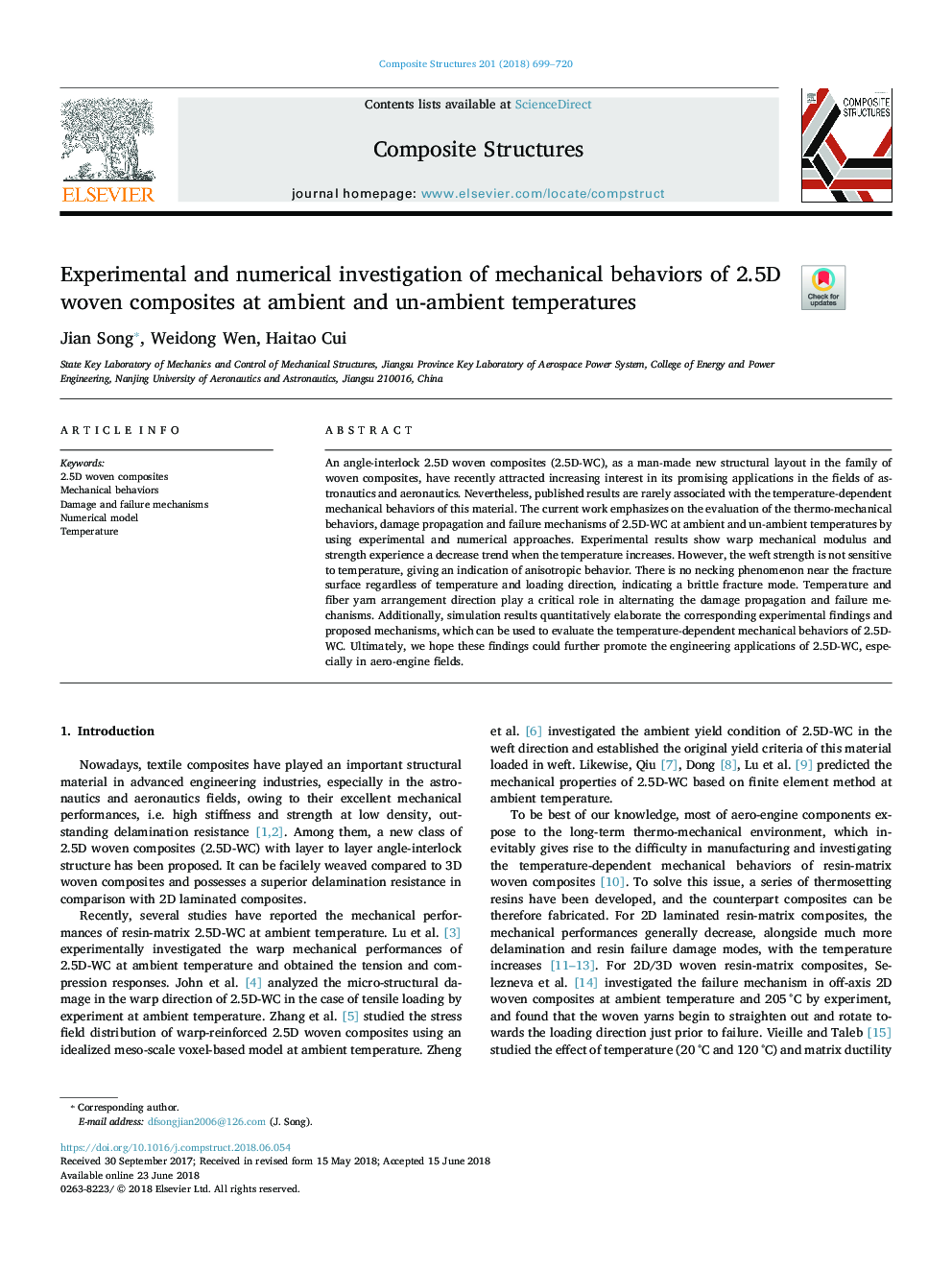| Article ID | Journal | Published Year | Pages | File Type |
|---|---|---|---|---|
| 6703313 | Composite Structures | 2018 | 22 Pages |
Abstract
An angle-interlock 2.5D woven composites (2.5D-WC), as a man-made new structural layout in the family of woven composites, have recently attracted increasing interest in its promising applications in the fields of astronautics and aeronautics. Nevertheless, published results are rarely associated with the temperature-dependent mechanical behaviors of this material. The current work emphasizes on the evaluation of the thermo-mechanical behaviors, damage propagation and failure mechanisms of 2.5D-WC at ambient and un-ambient temperatures by using experimental and numerical approaches. Experimental results show warp mechanical modulus and strength experience a decrease trend when the temperature increases. However, the weft strength is not sensitive to temperature, giving an indication of anisotropic behavior. There is no necking phenomenon near the fracture surface regardless of temperature and loading direction, indicating a brittle fracture mode. Temperature and fiber yarn arrangement direction play a critical role in alternating the damage propagation and failure mechanisms. Additionally, simulation results quantitatively elaborate the corresponding experimental findings and proposed mechanisms, which can be used to evaluate the temperature-dependent mechanical behaviors of 2.5D-WC. Ultimately, we hope these findings could further promote the engineering applications of 2.5D-WC, especially in aero-engine fields.
Related Topics
Physical Sciences and Engineering
Engineering
Civil and Structural Engineering
Authors
Jian Song, Weidong Wen, Haitao Cui,
